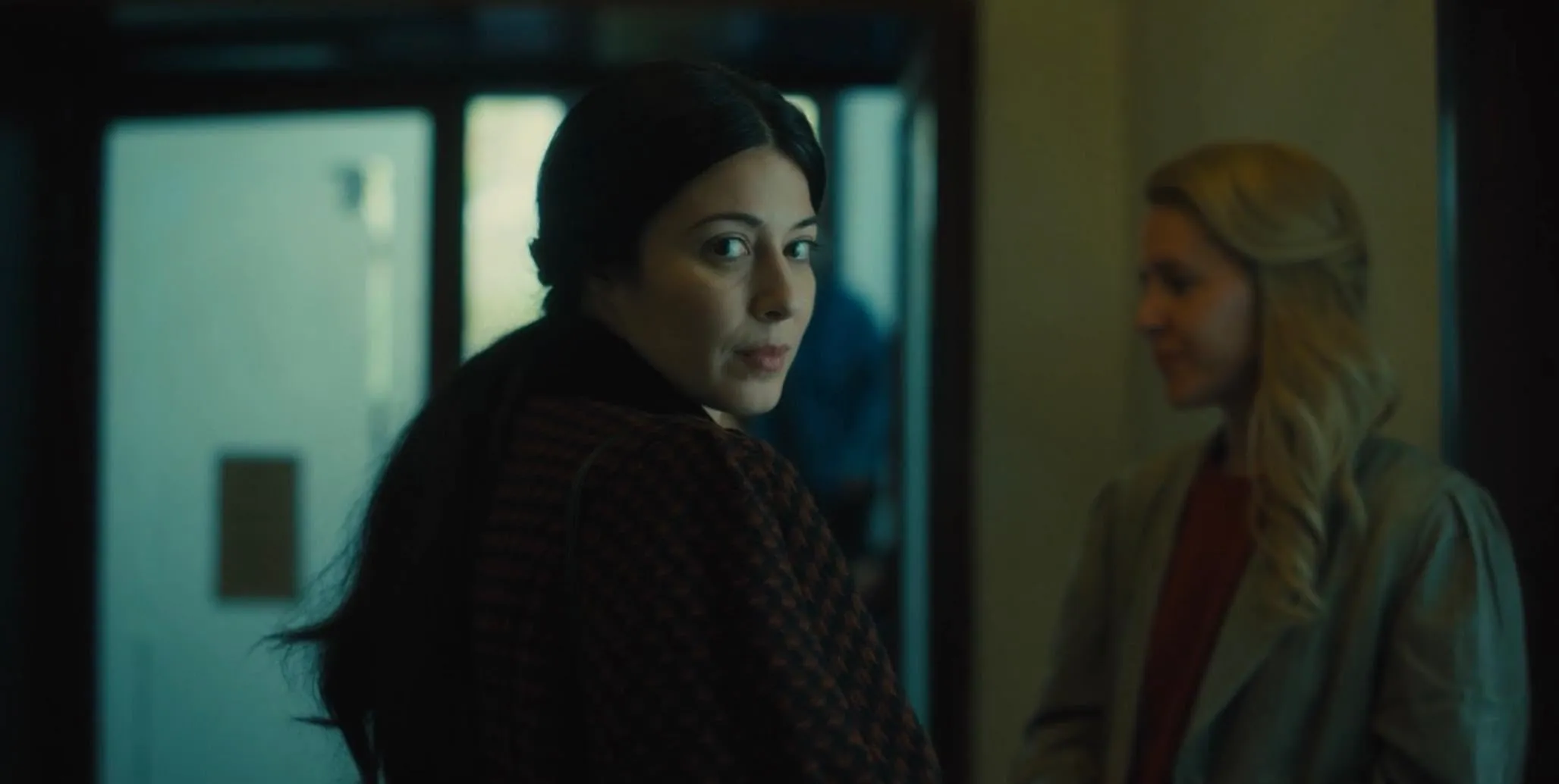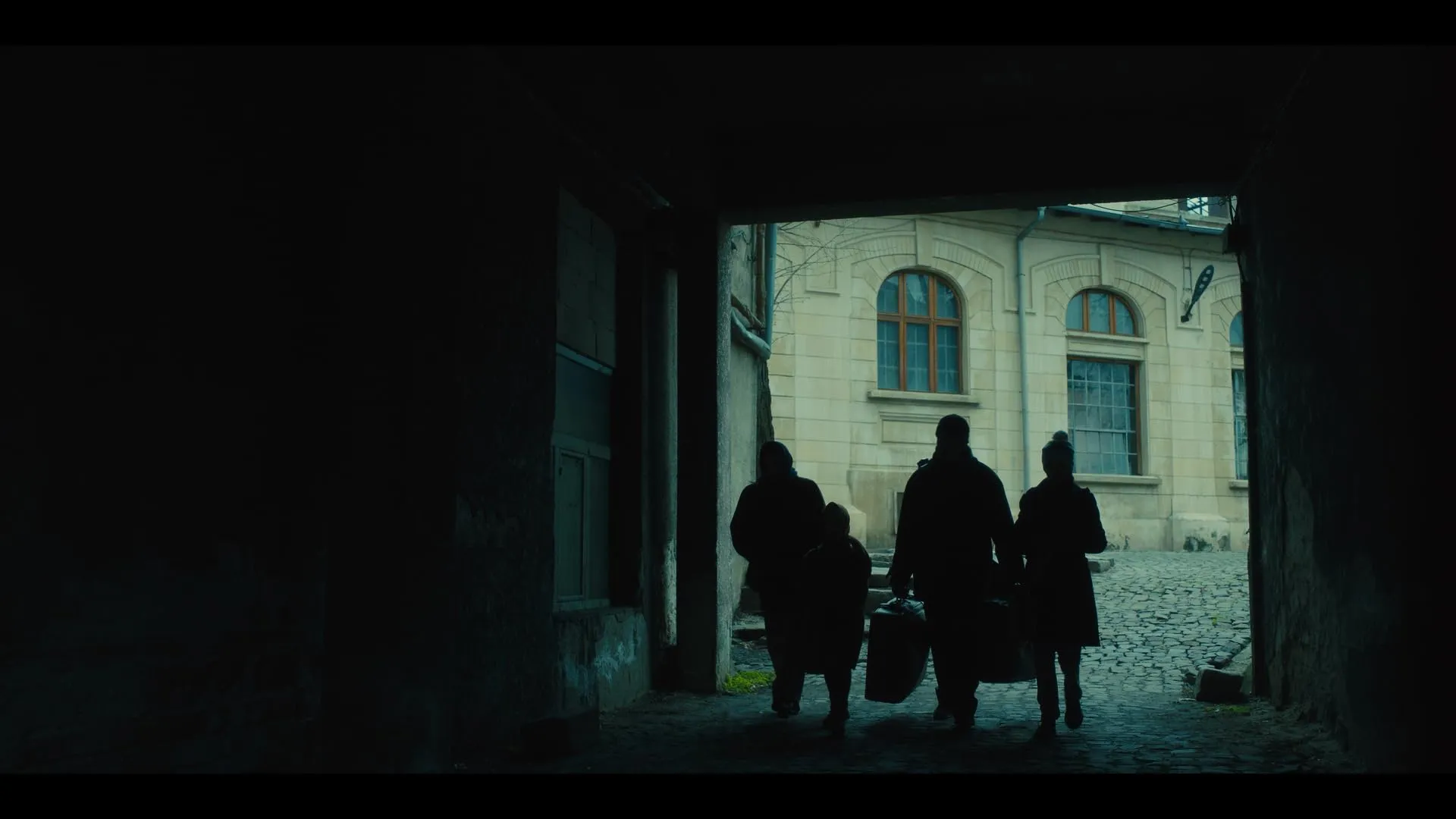“Between Borders” explores the profound narrative of the Petrosyan family, rooted in Azerbaijan’s complex landscape of cultural heritage and systemic oppression. The film reveals an intimate perspective of an Armenian family confronting ethnic conflicts and the devastating impact of forced relocation during the Soviet Union’s collapse.
The family’s traumatic exodus from their homeland unfolds through visceral performances by Elizabeth Tabish and Patrick Sabongui. Their portrayal captures the raw emotional experience of migrants navigating unfamiliar territories and confronting persistent discrimination.
Their arduous trek through Russia leads them to a dilapidated Volgograd apartment, where a local church provides momentary solace amid widespread uncertainty. The narrative reaches a critical point during their asylum trial in the United States, where idealistic notions of refuge clash with stringent immigration regulations.
The film’s strength lies in its nuanced exploration of human displacement, compelling viewers to contemplate the intricate human stories behind migration. By presenting a personal lens on broader geopolitical shifts, “Between Borders” invites empathy and understanding of refugee experiences.
Portraits of Resilience: Character Analysis in “Between Borders”
The story of “Between Borders” centers on the Petrosyan family, with Ivan and Violetta embodying the raw experience of displaced people. Ivan, a rocket scientist, now faces the harsh reality of menial work and discrimination in Russia. Patrick Sabongui’s performance reveals Ivan’s internal struggle—a skilled professional reduced to fighting for survival, wrestling with lost dignity and familial responsibility.
Violetta, played by Elizabeth Tabish, emerges as the family’s emotional core. She transforms from a fearful refugee to a determined protector, supporting her daughters Olga and Julia through uncertainty. Her journey speaks to survival and quiet strength.
Olga and Julia represent childhood’s resilience. They adapt to new environments while preserving their cultural roots, their performances capturing the complex emotional landscape of young immigrants caught between worlds.
Supporting characters—local parishioners and the American missionary Dwayne—provide context to the Petrosyans’ struggle. They illustrate the spectrum of human response to displacement: compassion, indifference, and hope.
Through intimate storytelling, “Between Borders” explores displacement, revealing how families survive when everything familiar is stripped away.
Themes of Faith and Humanity in “Between Borders”
“Between Borders” explores the themes of faith and hope amid displacement, revealing the Petrosyan family’s strength. The local church in Russia becomes a refuge, offering emotional support during challenging times. Ivan confronts his past while Violetta’s belief helps the family persevere. Their experience shows how spiritual conviction can transform despair into resilience.
The film exposes the harsh realities of discrimination and racism. The Petrosyans encounter prejudice in Russia, revealing societal tensions around identity and belonging. Each moment of racial hostility deepens their struggle, compelling viewers to examine their perceptions of immigrants.
Cinematic techniques enhance the narrative’s emotional depth. Visual contrasts between community warmth and discriminatory experiences create a powerful storytelling approach. Sound design captures intimate moments of connection, weaving an immersive emotional landscape. The film presents a nuanced exploration of human experience, inviting viewers to connect with the characters’ complex journey.
Crafting Atmosphere: The Cinematography and Production of “Between Borders”
“Between Borders” transports viewers into a meticulously crafted visual world of the late 80s and early 90s. Set designs range from the stark Azerbaijan family home to the cramped, peeling Volgograd apartment walls—each space captures historical nuance. Costuming speaks volumes: vibrant yet modest Armenian family attire contrasts with drab Russian character clothing, subtly revealing societal dynamics and personal struggles.
Cinematography weaves a subdued color palette that whispers melancholy while preserving subtle hope. Close-up shots reveal emotional landscapes, capturing intimate familial moments of connection and tension. Deliberate framing and light techniques filter through shadows, highlighting human fragility amid complex challenges.
Editing crafts a narrative rhythm reminiscent of French New Wave sensibilities. Transitions echo jazz-like improvisation—structured yet fluid. Quiet moments punctuate narrative momentum, allowing emotional weight to resonate. The film moves with an organic pulse, tracking the Petrosyans’ search for stability through geographical and personal transformations.
The cinematic approach transforms “Between Borders” into a nuanced exploration of displacement, identity, and human resilience.
Navigating Borders: Cultural and Historical Context in “Between Borders”
The film “Between Borders” explores the Nagorno-Karabakh conflict between Armenia and Azerbaijan, a complex struggle that emerged during the Soviet Union’s collapse. Through the story of the Petrosyan family, the film reveals the human cost of ethnic wars. It portrays the displacement and emotional trauma experienced by families caught in geographic and political tensions.
The movie connects historical events to current discussions about immigration and refugee experiences. It presents the Petrosyans’ journey as a window into the personal stories behind complex policy debates. The narrative challenges viewers to see beyond statistics and political discussions, highlighting individual human experiences of displacement and survival.
By weaving personal narratives with historical context, the film encourages audiences to reflect on themes of identity, belonging, and human resilience. It creates a nuanced exploration of refugee experiences, inviting viewers to understand the emotional landscape of people forced to leave their homeland.
The film’s storytelling approach transforms a historical conflict into a deeply personal examination of human endurance, presenting complex geopolitical issues through an intimate lens that prioritizes human dignity and empathy.
Resonance and Reach: Audience Reception and Impact of “Between Borders”
“Between Borders” connects with Christian viewers through its exploration of moral and spiritual themes. The story highlights faith, strength, and compassion, presenting a narrative that speaks to core Christian values.
The Petrosyan family’s journey reflects teachings about supporting those in need, creating a meaningful experience for church groups and faith-centered audiences.
The film examines critical social questions related to migration and displacement. Its narrative reveals the complex experiences of people seeking safety, challenging audiences to view immigrant stories with greater understanding.
The film presents a nuanced portrayal of human struggle that speaks to current social tensions, inviting viewers to consider the personal experiences behind broader political discussions. By presenting individual stories, the movie encourages viewers to see beyond stereotypes and connect with the human experiences of those forced to leave their homes.
Final Reflections: The Heart of “Between Borders”
“Between Borders” presents a moving story about displacement, hope, and the quest for belonging. The narrative explores the immigrant experience through the Petrosyan family’s journey, revealing difficult challenges while highlighting human resilience. Viewers are drawn into a deeply personal account that encourages reflection on migration and community support.
The film offers valuable insights for people interested in human stories behind immigration, religious communities, and social dynamics. Its approach connects audiences through emotional storytelling that prompts deeper understanding of complex human experiences.
The Review
Between Borders
"Between Borders" explores the Petrosyan family's journey through displacement and asylum. The film presents a narrative of faith and hope, though its artistic approach occasionally lacks originality. The story connects with current dialogues about immigration and refugee experiences, offering viewers a window into human resilience and survival.
PROS
- The film effectively captures the emotional struggles of its characters, resonating with the audience.
- Notable performances by the lead cast, particularly in portraying familial bonds.
- Successfully integrates themes of hope and faith, appealing to Christian audiences.
CONS
- The story follows conventional tropes, resulting in moments of predictability.
- While the cinematography is competent, it lacks distinctive artistic flair that could elevate the film.
- Some themes and challenges faced by refugees may feel oversimplified or underexplored.




















































